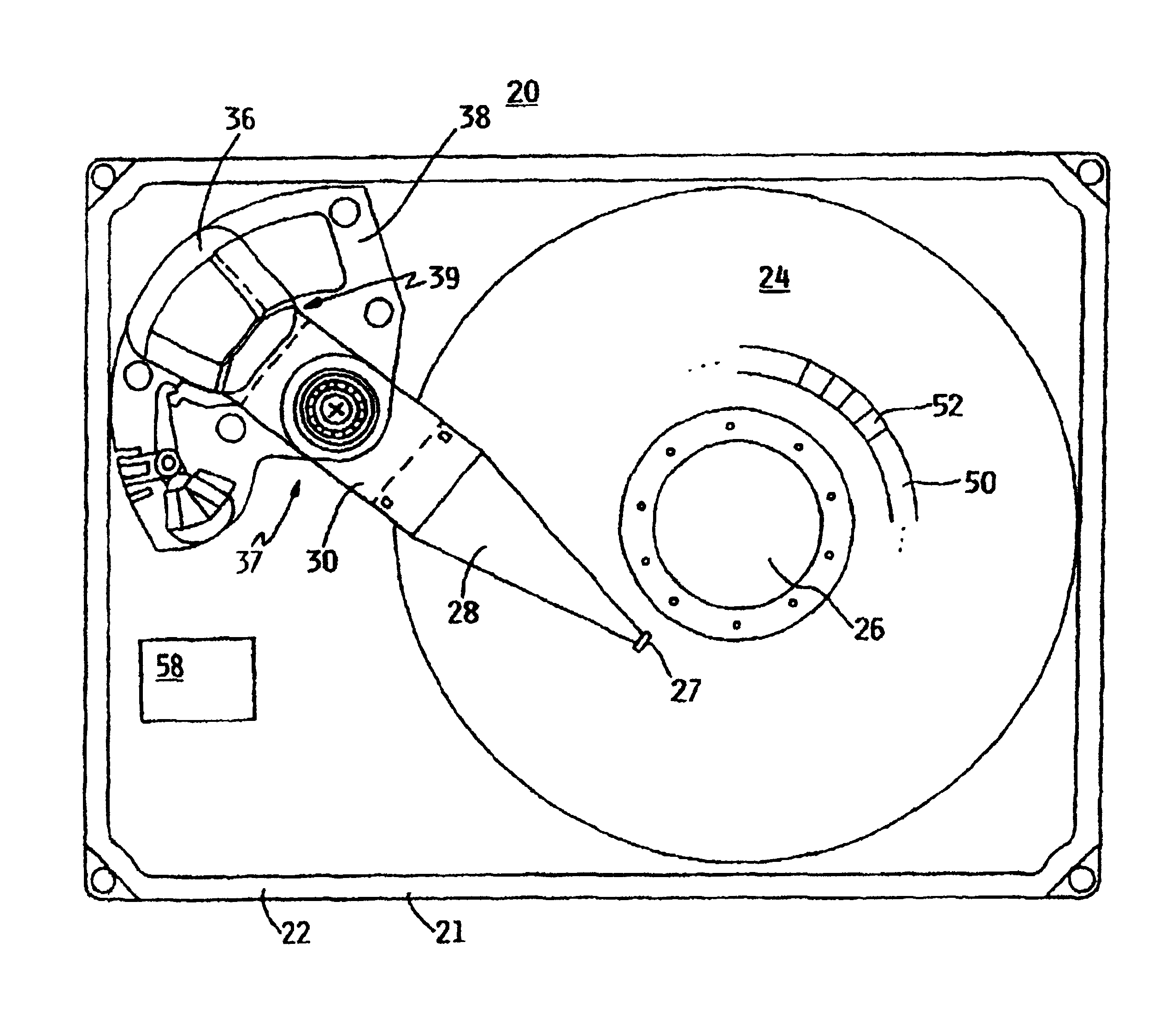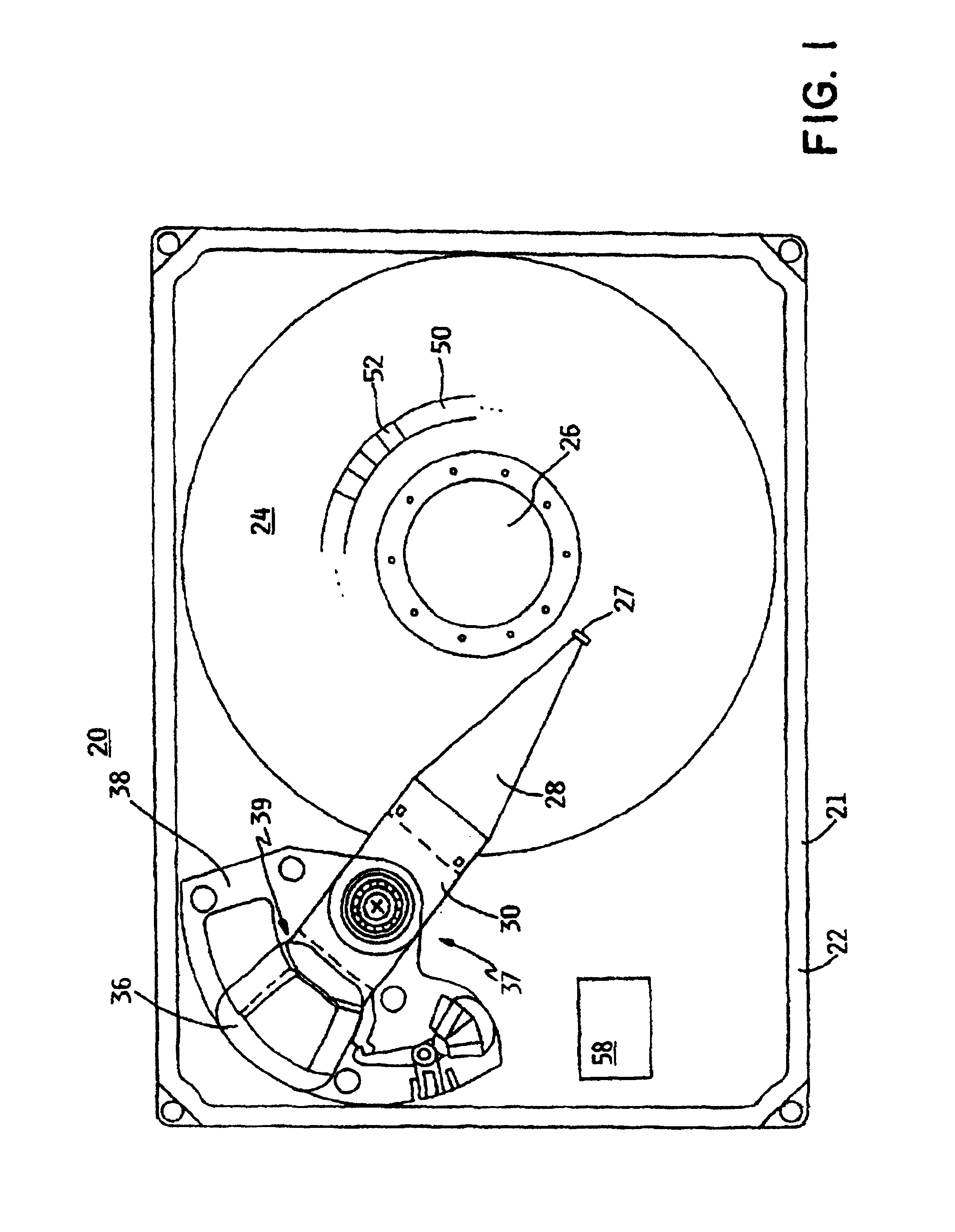Method for look-ahead thermal sensing in a data storage device
a data storage device and thermal sensing technology, applied in the field of data storage systems, can solve the problems of increasing the likelihood of misregistration, and increasing the number of areal density
- Summary
- Abstract
- Description
- Claims
- Application Information
AI Technical Summary
Benefits of technology
Problems solved by technology
Method used
Image
Examples
Embodiment Construction
[0031]The present invention addresses the problem of detecting slider dynamics and disk defects by using an auxiliary thermal sensor attached to an airbearing slider in a disk drive. More specifically, the present invention uses a auxiliary thermal sensor that is similar to conventional magnetoresistive (MR) and giant magnetoresistance (GMR) heads, but is located some distance away from the usual placement of these heads. The auxiliary thermal sensor is preferably located forward (i.e., toward the leading edge) of the slider airbearing. In addition, the width of the auxiliary thermal sensor is preferably much greater, in a track width direction, than that of conventional MR and GMR heads. Furthermore, the sensitivity of the auxiliary thermal sensor to changes in the slider-to-disk spacing can be made many times that of conventional MR and GMR heads. Also, the auxiliary thermal sensor is preferably constructed so that the magnetic fields emanating from it are minimized so as not to i...
PUM
| Property | Measurement | Unit |
|---|---|---|
| separation distance | aaaaa | aaaaa |
| temperature | aaaaa | aaaaa |
| temperature | aaaaa | aaaaa |
Abstract
Description
Claims
Application Information
 Login to View More
Login to View More - R&D
- Intellectual Property
- Life Sciences
- Materials
- Tech Scout
- Unparalleled Data Quality
- Higher Quality Content
- 60% Fewer Hallucinations
Browse by: Latest US Patents, China's latest patents, Technical Efficacy Thesaurus, Application Domain, Technology Topic, Popular Technical Reports.
© 2025 PatSnap. All rights reserved.Legal|Privacy policy|Modern Slavery Act Transparency Statement|Sitemap|About US| Contact US: help@patsnap.com



